
Bucharest: The Charm of Eastern Europe's Hidden Gem
Explore Bucharest, a captivating blend of historical charm and modern vibrancy, with stunning architecture, lively nightlife, and rich cultural landmarks in the heart of Romania.
Bucharest, the capital city of Romania, is a fascinating blend of old-world charm and modern vibrancy. Known as the 'Paris of the East,' Bucharest boasts grand boulevards, stunning architecture, and an array of cultural landmarks. From its historic Old Town to the imposing Palace of the Parliament, the city offers a rich tapestry of experiences for every traveler. Begin your journey in Lipscani, the heart of Bucharest's Old Town, where cobbled streets and lively nightlife converge. Here, you can explore centuries-old churches, quaint cafes, and bustling bars. Don't miss the opportunity to visit Manuc's Inn, one of the oldest operating inns in Europe, which offers a glimpse into the city's storied past. A visit to Bucharest would be incomplete without marveling at the Palace of the Parliament. This colossal structure, the second-largest administrative building in the world, is a testament to the city's complex history and architectural ambition. Guided tours reveal its opulent interiors and provide insight into Romania's communist era. For nature enthusiasts, Herăstrău Park and Cismigiu Gardens offer peaceful retreats within the city's hustle and bustle. These green oases provide the perfect spots for leisurely strolls, boat rides, or simply unwinding amidst nature. Additionally, the Village Museum within Herăstrău Park showcases traditional Romanian rural life with its collection of authentic houses and artifacts. Bucharest is also a city of culture, boasting theaters, museums, and galleries. The Romanian Athenaeum, an iconic concert hall, hosts classical music performances that draw audiences from around the world. Meanwhile, the National Museum of Art of Romania and the Museum of the Romanian Peasant present compelling exhibits that delve into the nation's artistic and cultural heritage.
Local tips in Bucharest
- Consider purchasing a Bucharest City Pass for discounts on top attractions and public transport.
- Use the city's extensive metro system to navigate efficiently, especially during rush hours.
- Try local Romanian dishes like sarmale (cabbage rolls) and mici (grilled sausages) at traditional restaurants.
- Visit the Old Town during weekdays to avoid weekend crowds and enjoy a more relaxed atmosphere.
- Take a guided tour of the Palace of the Parliament to fully appreciate its history and grandeur.
- Download a translation app as English is not widely spoken, especially in suburban areas.
Neighbourhoods in Bucharest
Bucharest: The Charm of Eastern Europe's Hidden Gem
Bucharest, the capital city of Romania, is a fascinating blend of old-world charm and modern vibrancy. Known as the 'Paris of the East,' Bucharest boasts grand boulevards, stunning architecture, and an array of cultural landmarks. From its historic Old Town to the imposing Palace of the Parliament, the city offers a rich tapestry of experiences for every traveler. Begin your journey in Lipscani, the heart of Bucharest's Old Town, where cobbled streets and lively nightlife converge. Here, you can explore centuries-old churches, quaint cafes, and bustling bars. Don't miss the opportunity to visit Manuc's Inn, one of the oldest operating inns in Europe, which offers a glimpse into the city's storied past. A visit to Bucharest would be incomplete without marveling at the Palace of the Parliament. This colossal structure, the second-largest administrative building in the world, is a testament to the city's complex history and architectural ambition. Guided tours reveal its opulent interiors and provide insight into Romania's communist era. For nature enthusiasts, Herăstrău Park and Cismigiu Gardens offer peaceful retreats within the city's hustle and bustle. These green oases provide the perfect spots for leisurely strolls, boat rides, or simply unwinding amidst nature. Additionally, the Village Museum within Herăstrău Park showcases traditional Romanian rural life with its collection of authentic houses and artifacts. Bucharest is also a city of culture, boasting theaters, museums, and galleries. The Romanian Athenaeum, an iconic concert hall, hosts classical music performances that draw audiences from around the world. Meanwhile, the National Museum of Art of Romania and the Museum of the Romanian Peasant present compelling exhibits that delve into the nation's artistic and cultural heritage.
When is the best time to go to Bucharest?
Iconic landmarks you can’t miss
King Mihai I Park
Explore King Mihai I Park, Bucharest's green gem, offering tranquility, recreational activities, and beautiful landscapes for all visitors.
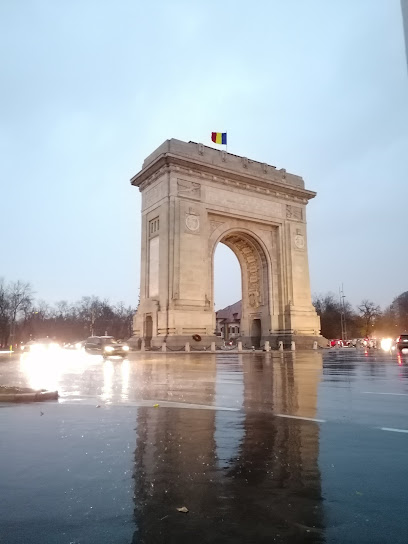
Constitution Square
Explore Constitution Square, a majestic landmark in Bucharest, surrounded by iconic architecture and vibrant cultural activities.
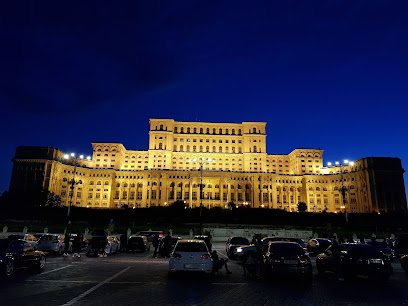
The Triumphal Arch
Explore the stunning Triumphal Arch in Bucharest, a historical monument symbolizing victory and national pride, surrounded by vibrant city life.
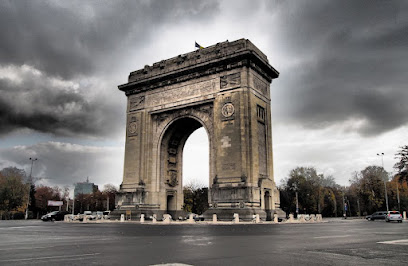
The Romanian Athenaeum
Discover the Romanian Athenaeum, Bucharest's iconic concert hall, a masterpiece of architecture and culture, hosting world-class performances in a historic setting.

Bucharest Fountains
Discover the mesmerizing Bucharest Fountains, where water, light, and music unite for an unforgettable experience in Romania's vibrant capital.
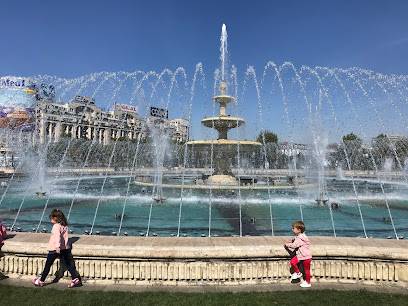
Museum of Senses
Explore the Museum of Senses in Bucharest, where interactive exhibits challenge your perception and engage your senses in a fun, educational environment.
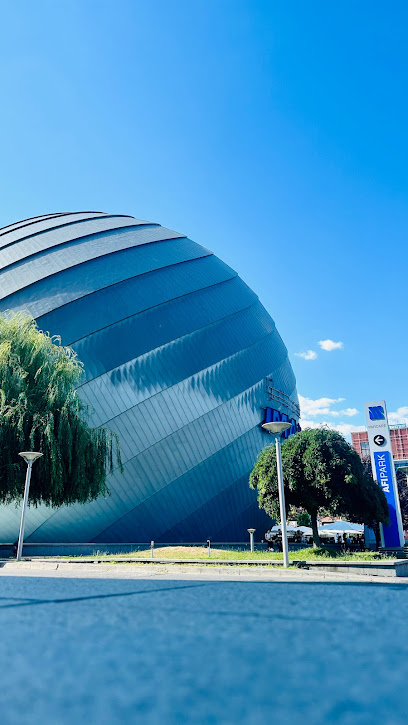
University's Square
Discover the vibrant atmosphere of University Square in Bucharest, a historical landmark rich in culture and perfect for your travel adventures.
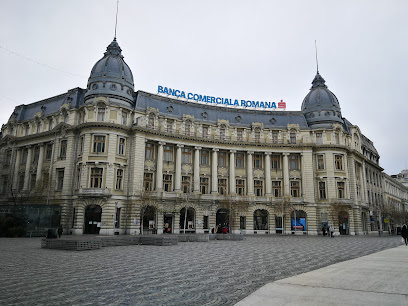
National Museum of Romanian History
Explore Romania's past at the National Museum of Romanian History, where centuries of culture and heritage come alive through captivating exhibits.

Palace of Parliament
Explore the Palace of Parliament, Bucharest's largest administrative building, showcasing stunning architecture and rich Romanian history.
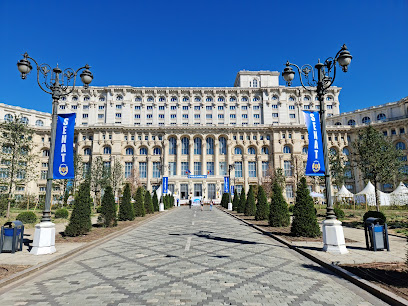
National Military Club
Explore Bucharest’s National Military Club, a stunning historical landmark and cultural center showcasing Romania's military heritage and vibrant events.
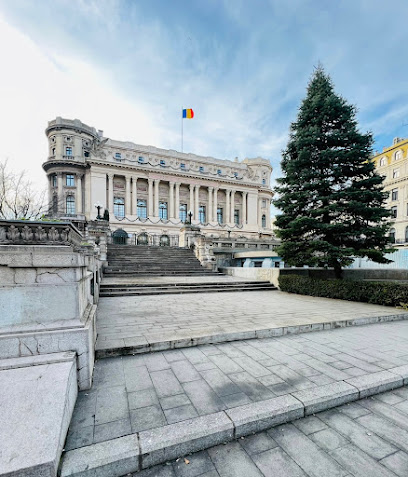
Macca-Vilacrosse Passage
Discover the captivating Macca-Vilacrosse Passage in Bucharest – a stunning architectural gem filled with shops, cafes, and rich history.
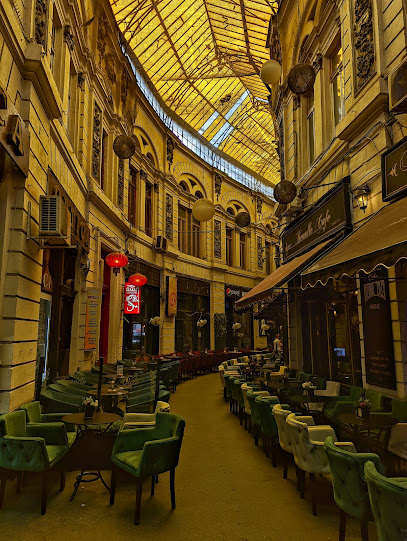
Antim Monastery
Discover the tranquil beauty and rich history of Antim Monastery in Bucharest, a serene retreat that showcases Romania's spiritual heritage.
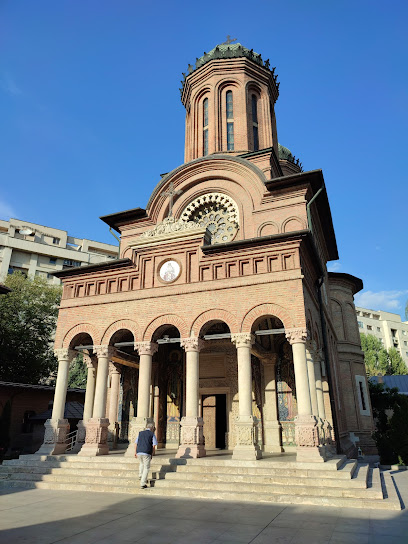
The House of the Free Press
Discover the House of the Free Press in Bucharest, a landmark that symbolizes resilience and freedom, offering stunning architecture and rich history.
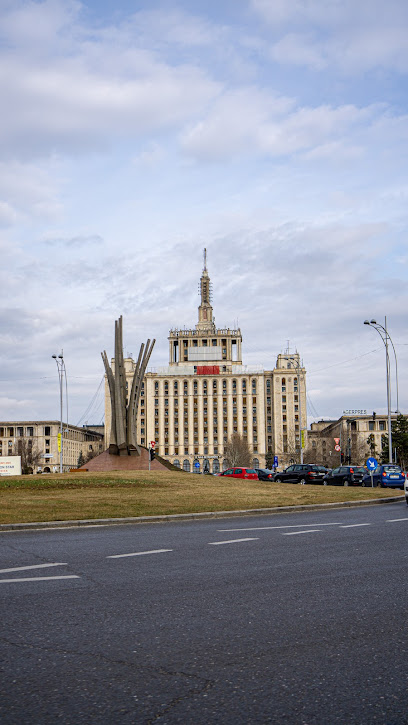
Memorial of Rebirth
Explore the Memorial of Rebirth in Bucharest, a powerful monument symbolizing Romania's struggle for freedom and resilience, set in the historic Revolution Square.
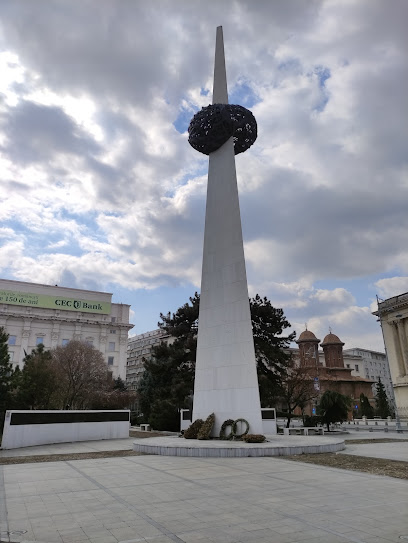
The Museum of Bucharest
Discover the rich history of Bucharest at The Museum of Bucharest, a captivating national museum showcasing the city's evolution through art and artifacts.
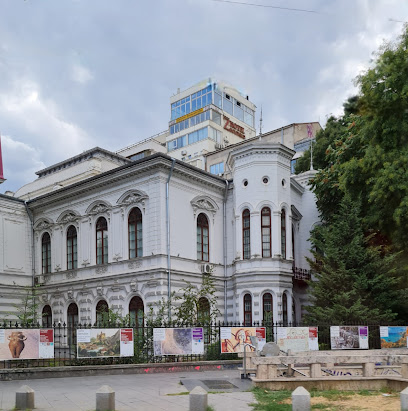
Unmissable attractions to see
King Mihai I Park
Explore the tranquil beauty of King Mihai I Park in Bucharest, a perfect blend of nature and culture in Romania's bustling capital.
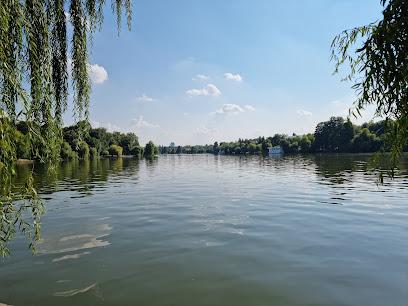
Therme Bucharest
Experience ultimate relaxation at Therme Bucharest, the premier wellness center and water park offering thermal pools and spa treatments in a tropical setting.
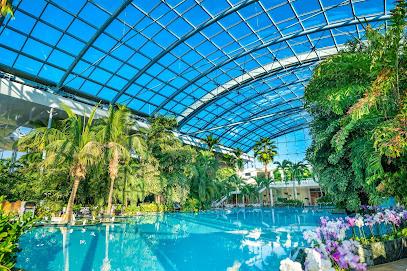
Youth Park
Experience the lush greenery and vibrant atmosphere of Youth Park in Bucharest, a perfect urban retreat for relaxation and recreation.
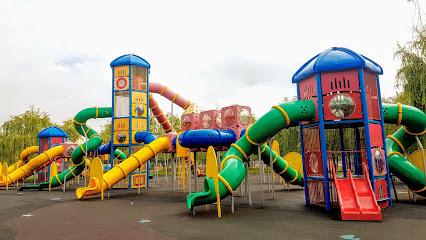
Cismigiu Gardens
Experience the charm of Cismigiu Gardens, Bucharest's historic park, where lush landscapes and vibrant cafes create an unforgettable urban oasis.
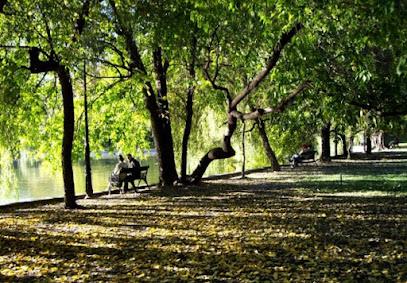
Alexandru Ioan Cuza Park
Experience nature's tranquility at Alexandru Ioan Cuza Park in Bucharest, a perfect blend of relaxation, recreation, and beautiful landscapes.
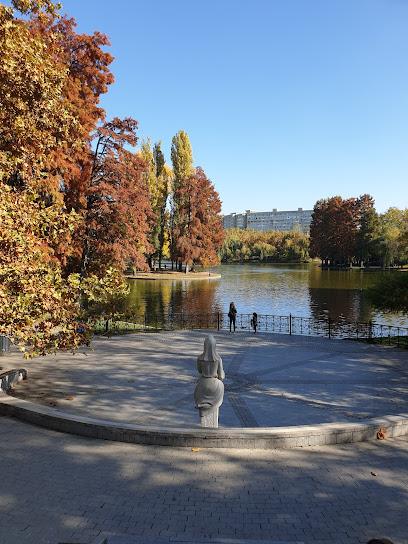
Drumul Taberei Park
Explore Drumul Taberei Park, Bucharest's green gem, offering stunning landscapes, recreational activities, and a peaceful escape in the heart of the city.
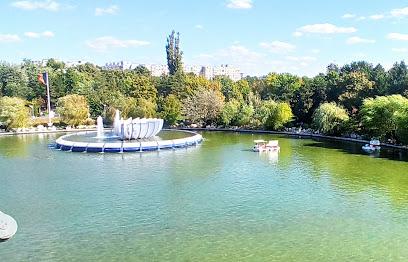
Cărturești Carusel
Explore Cărturești Carusel in Bucharest: a stunning bookstore, café, and cultural hub merging history with modern creativity.
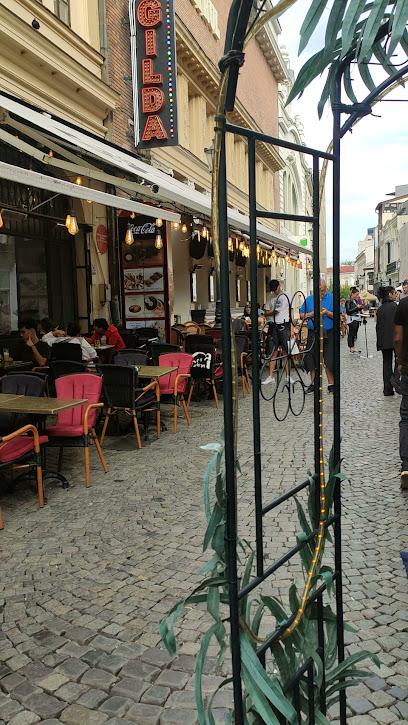
Grigore Antipa National Museum of Natural History
Unveil the marvels of nature at Grigore Antipa National Museum of Natural History, where curiosity meets education in the heart of Bucharest.
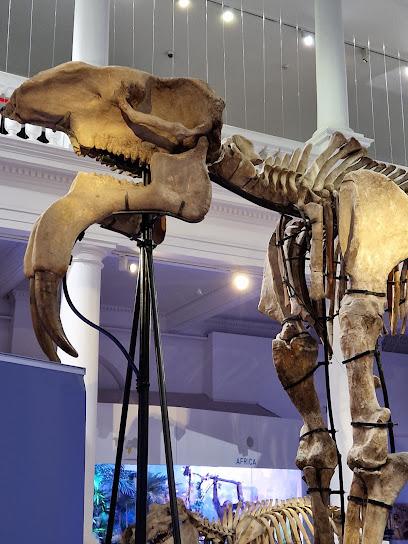
Constitution Square
Discover the historical and architectural marvels of Constitution Square, a vibrant centerpiece of Bucharest's rich cultural heritage.
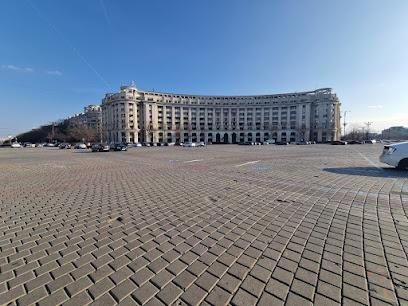
Izvor Park
Explore Izvor Park, a serene urban oasis in Bucharest featuring lush greenery, scenic views, and a peaceful escape in the heart of the city.
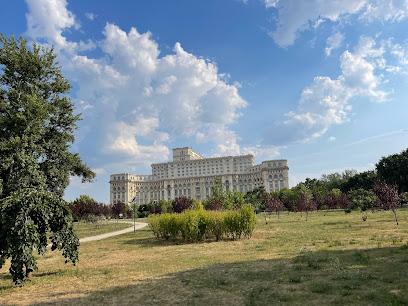
Carol I Park
Discover the beauty and history of Carol I Park, a serene retreat in the heart of Bucharest, perfect for relaxation and cultural exploration.
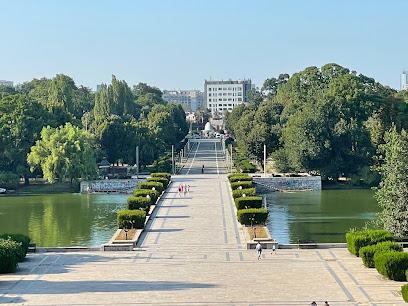
The Romanian Athenaeum
Discover the architectural beauty and rich cultural heritage of the Romanian Athenaeum, a premier concert hall and historical landmark in Bucharest.

Union Park
Discover the beauty and tranquility of Union Park, Bucharest's iconic green space, perfect for relaxation, cultural events, and family fun.
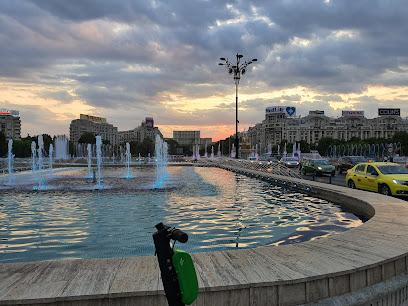
Dimitrie Brândză Botanical Garden
Discover the lush beauty and tranquility of Dimitrie Brândză Botanical Garden, Bucharest's urban oasis filled with diverse flora and educational experiences.
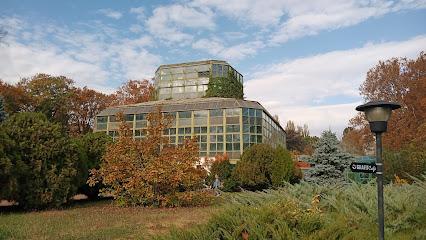
Ion Luca Caragiale National Theatre
Discover the grandeur of performing arts at the Ion Luca Caragiale National Theatre, Bucharest's cultural gem showcasing Romania's rich theatrical heritage.
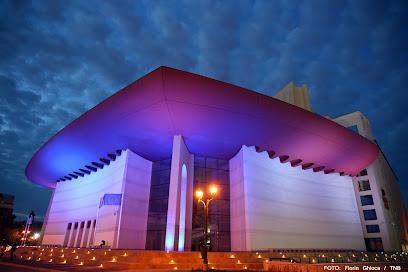
Essential places to dine
Caru' cu bere
Experience the rich flavors of Romania at Caru' cu Bere – where tradition meets culinary excellence in Bucharest.
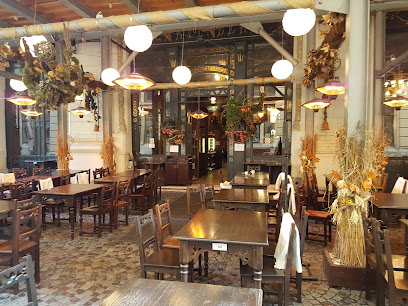
Manuc's Inn Restaurant
Experience authentic Eastern European and Middle Eastern flavors at Manuc's Inn Restaurant in Bucharest's historic heart.
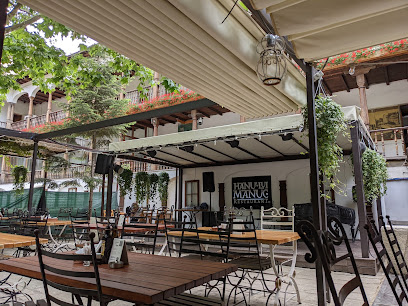
Hanu' Berarilor Casa Oprea Soare
Experience the authentic flavors of Romania at Hanu' Berarilor Casa Oprea Soare, where traditional cuisine meets vibrant atmosphere.
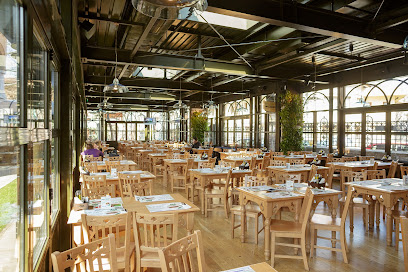
Nor Sky Casual Restaurant
Discover culinary excellence at Nor Sky Casual Restaurant in Bucharest – where stunning views meet exquisite flavors.
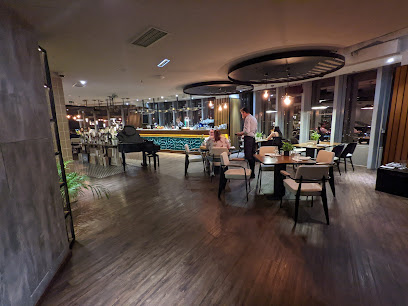
Restaurant Pescăruș
Discover exquisite Eastern European and seafood dishes at Restaurant Pescăruș in Bucharest – a perfect blend of taste and ambiance.
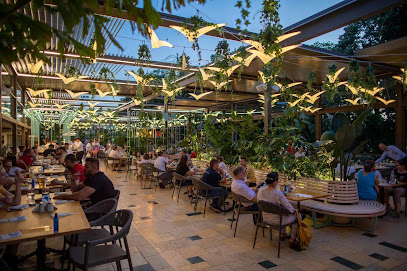
Excalibur
Discover the charm of medieval dining at Excalibur Restaurant in Bucharest - where every meal tells a story.
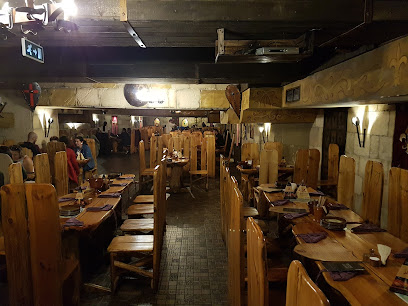
Linea / Closer To The Moon
Discover exquisite dining and vibrant nightlife at Linea / Closer To The Moon in Bucharest - where culinary artistry meets lively atmosphere.
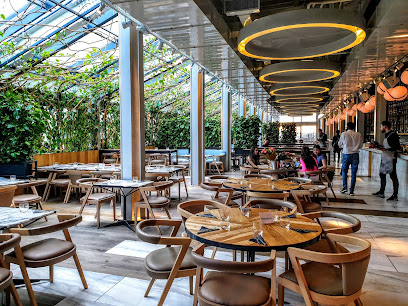
Energiea
Experience the culinary delights at Energiea, Bucharest's premier gastropub blending local flavors with a lively atmosphere.
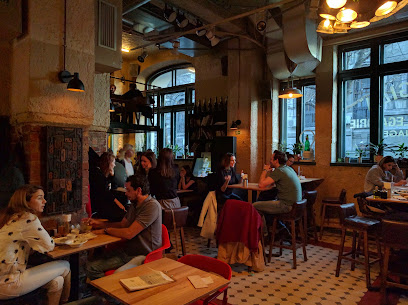
Hanu' Berarilor Casa Elena Lupescu
Experience authentic Eastern European barbecue at Hanu' Berarilor Casa Elena Lupescu in Bucharest - where tradition meets flavor.

La Mama
Discover authentic Romanian cuisine at La Mama in Bucharest - where tradition meets flavor in every dish.

Modelier
Discover Modelier in Bucharest - where gourmet burgers meet vibrant bistro vibes in an unforgettable dining experience.
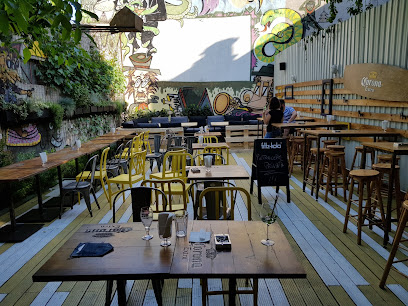
Simbio
Experience the culinary delight at Simbio, where fresh ingredients meet innovative cuisine in a cozy atmosphere in Bucharest.
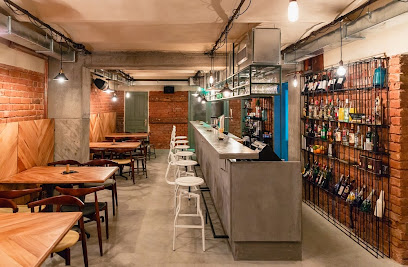
Vatra
Experience authentic Romanian cuisine at Vatra in Bucharest - where every dish tells a story.
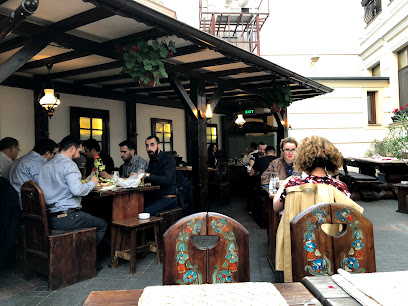
Lacrimi și Sfinți
Experience authentic Romanian cuisine at Lacrimi și Sfinți, where tradition meets innovation in every delicious dish.

Taverna Covaci
Discover authentic Romanian flavors at Taverna Covaci in Bucharest – where tradition meets taste in every dish.
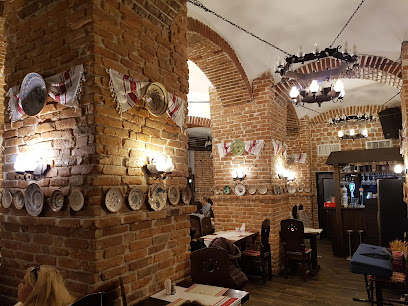
Markets, malls and hidden boutiques
AFI Cotroceni
Experience the vibrant atmosphere of AFI Cotroceni, Bucharest's largest shopping mall with top brands, entertainment, and diverse dining options.
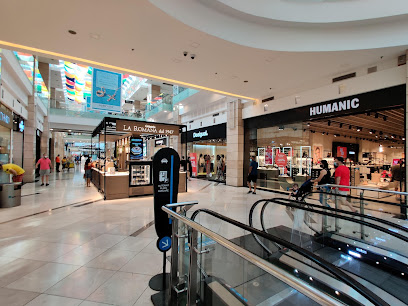
Unirea Shopping Center
Discover the ultimate shopping experience at Unirea Shopping Center in Bucharest, where style meets convenience in a vibrant atmosphere.
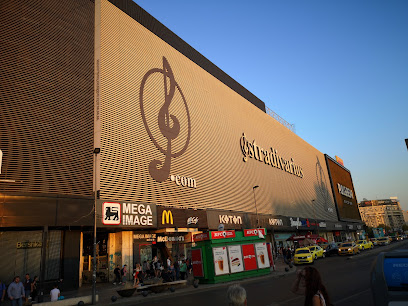
Cocor
Explore Cocor Mall in Bucharest: a vibrant shopping destination blending fashion, body art, and culinary delights in one unique location.
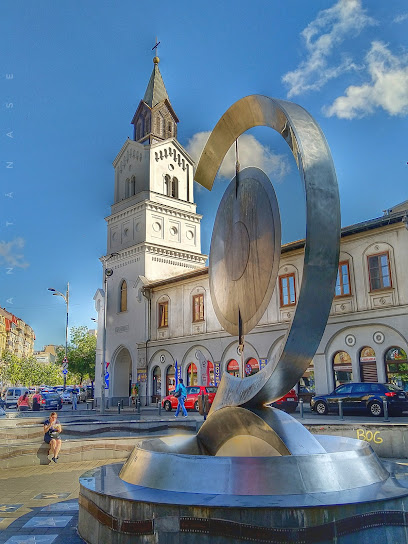
Romanian Boutique
Explore the Romanian Boutique for authentic souvenirs and unique gifts that embody the spirit of Romania's rich cultural heritage.
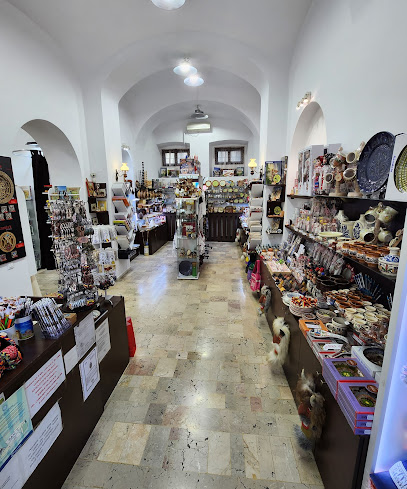
Angeline Cake Boutique - Concept Store
Experience the enchanting flavors and artistic designs of Angeline Cake Boutique, Bucharest's premier destination for exquisite cakes and pastries.
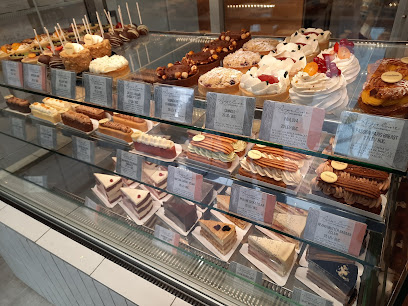
The Souvenir Shop
Discover authentic Romanian souvenirs at The Souvenir Shop in Bucharest, where local craftsmanship meets cultural heritage.
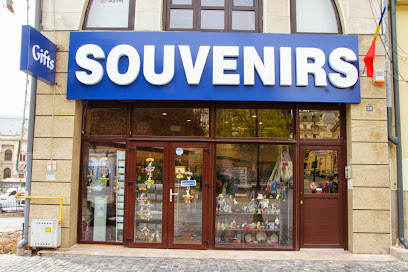
Corner Shop Bucuresti
Discover the artistic heart of Bucharest at Corner Shop Bucuresti, your go-to destination for quality art supplies and inspiration.
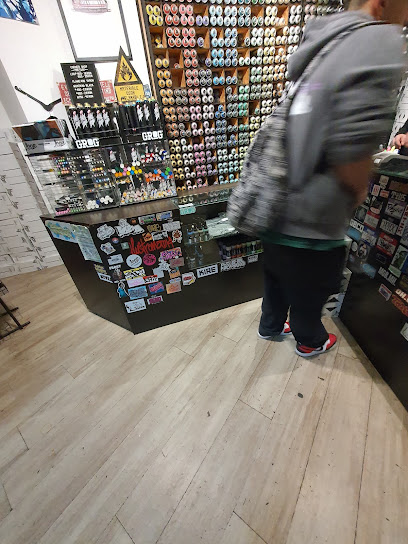
my romanian store
Explore My Romanian Store for unique souvenirs and handcrafted treasures that capture the essence of Romania's rich cultural heritage.
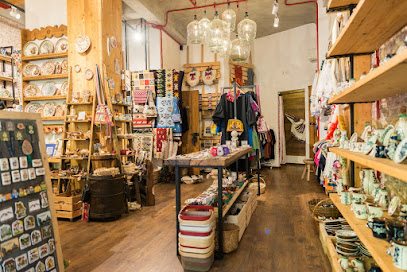
Gothic Fairy - Magazin de Cadouri, Bijuterii si Decoratiuni
Explore Gothic Fairy in Bucharest for unique souvenirs, exquisite jewelry, and captivating decorations that celebrate local artistry.
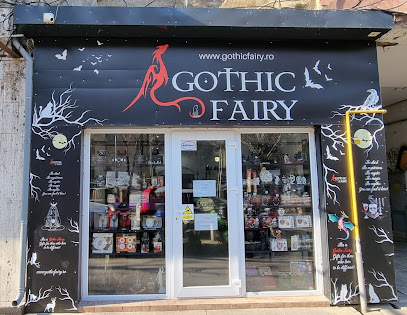
OPSHOP Vintage
Explore OPSHOP Vintage in Bucharest for unique, sustainable fashion treasures that tell a story.

Old Town Souvenirs
Discover unique crafts and gifts at Old Town Souvenirs in Bucharest, a charming store celebrating Romanian culture and craftsmanship.
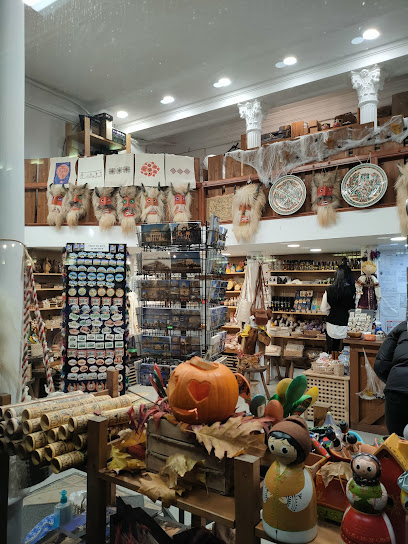
Check the Space
Explore Bucharest's unique vintage clothing store, Check the Space, where every piece has a story and each visit is a fashion adventure.
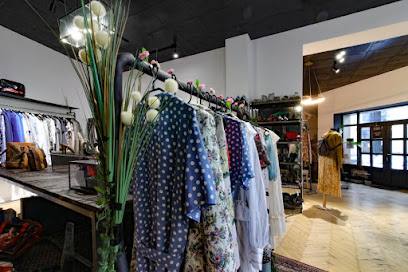
Altrntv
Discover unique fashion at Altrntv, a premier clothing store in Bucharest that showcases local talent and stylish apparel for every occasion.
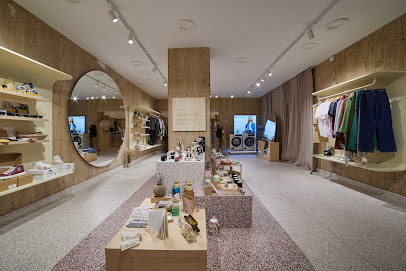
Mesteshukar ButiQ [MBQ]
Explore the vibrant world of handmade crafts at Mesteshukar ButiQ, Bucharest's premier destination for unique gifts and accessories.
![Mesteshukar ButiQ [MBQ]](https://evendo-location-media.s3.amazonaws.com/ShoppingImages/d7fb9bbc-6b81-416e-864c-bea5270d2aae)
Clothing ReSale Shop
Explore Bucharest's top vintage clothing store for unique, sustainable fashion choices that blend style with history.
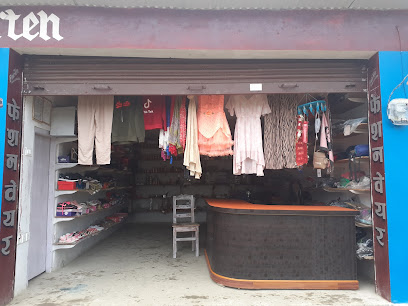
Essential bars & hidden hideouts
Nomad Skybar
Discover the breathtaking views and vibrant nightlife at Nomad Skybar, a chic destination in Bucharest offering exquisite cocktails and gourmet dining.
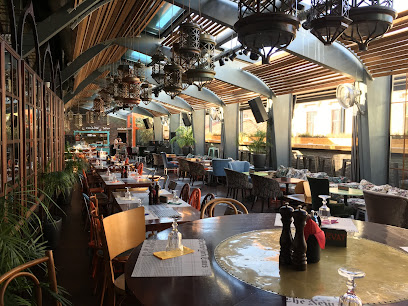
Big Ben Pub
Discover the lively ambiance and local flavors at Big Ben Pub in Bucharest, offering a perfect blend of drinks and hearty meals.
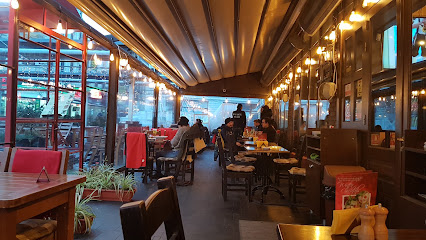
The Vintage Pub
Experience the vibrant nightlife in Bucharest at The Vintage Pub, where great drinks and live entertainment create unforgettable memories.
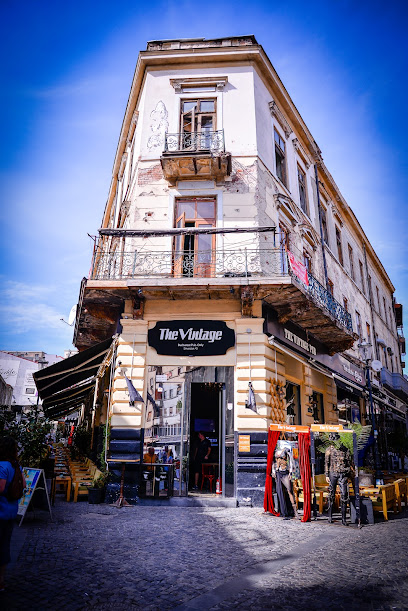
Jack's Pub
Experience the vibrant nightlife of Bucharest at Jack's Pub, where local charm meets modern hospitality in the heart of the city.
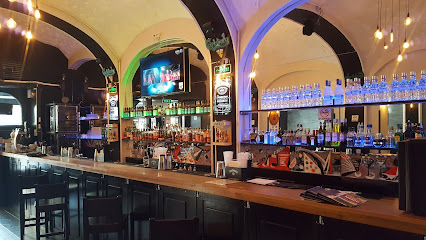
Club Bound
Discover the vibrant nightlife of Bucharest at Club Bound, where eclectic drinks and a lively atmosphere await you.
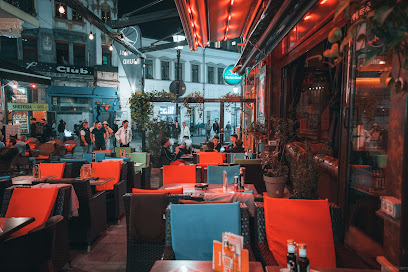
Private Hell
Discover the vibrant nightlife of Bucharest at Private Hell, a cozy bar with an eclectic atmosphere and an extensive drink selection.
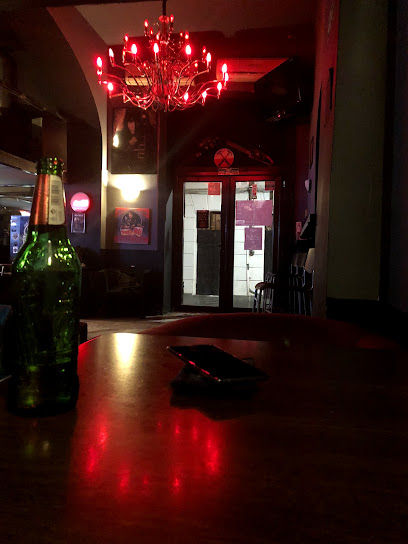
QP Pub
Experience the vibrant atmosphere of QP Pub, Bucharest's go-to spot for delicious food and drinks in a lively setting.
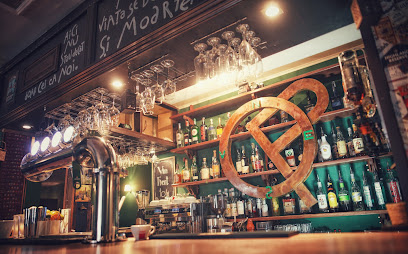
BEAT bar umanist
Experience the vibrant atmosphere and exceptional service at BEAT Bar Umanist, Bucharest's top spot for cocktails and nightlife.
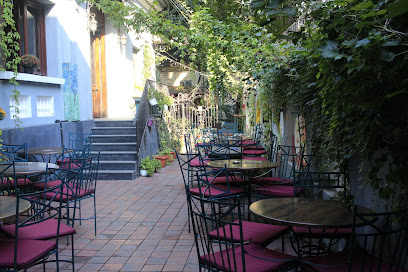
Corks Cozy Bar
Experience the elegance of wine culture at Corks Cozy Bar, Bucharest's premier wine bar and lounge, where every sip tells a story.
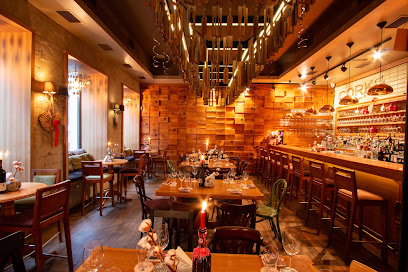
Abel's Wine Bar
Experience the elegance of fine wines in the heart of Bucharest at Abel's Wine Bar, where every sip tells a story.
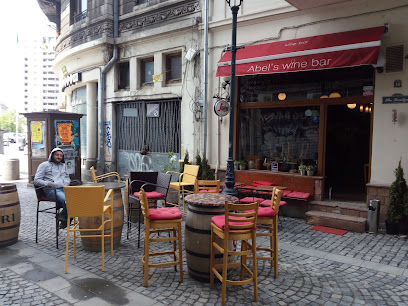
Terminus
Discover Terminus in Bucharest, a vibrant pub and restaurant offering delicious local and international cuisine in a lively atmosphere.
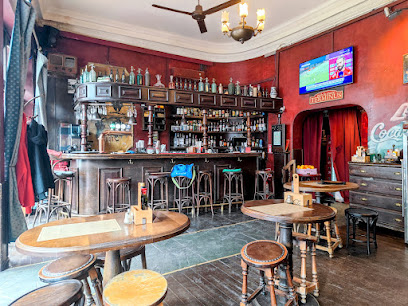
FIX ME A DRINK
Discover the botanical bar experience at Fix Me A Drink in Bucharest, where innovative cocktails and a lively atmosphere await.
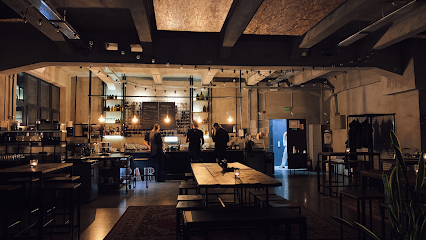
Robescu 14
Discover the vibrant nightlife of Bucharest at Robescu 14, where expertly crafted cocktails and a cozy atmosphere await you.

Nobis Bar
Discover Nobis Bar: a premier gastropub in Bucharest where culinary delights meet a vibrant nightlife experience.
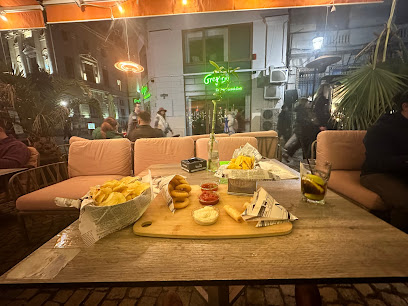
Retro Pub
Discover the vibrant Retro Pub in Bucharest, where great cocktails meet a relaxed atmosphere and unbeatable prices.
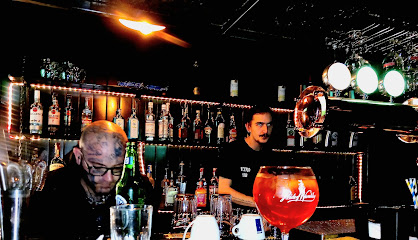
Local Phrases
-
- HelloSalut
[sah-loot] - GoodbyeLa revedere
[lah reh-ve-deh-reh] - YesDa
[dah] - NoNu
[noo] - Please/You're welcomeTe rog
[teh rohg] - Thank youMulțumesc
[mool-tsoo-mesk] - Excuse me/SorryScuzați-mă
[skoo-zah-tsee muh] - How are you?Ce mai faci?
[cheh my fahch?] - Fine. And you?Bine. Și tu?
[bee-neh. shee too?] - Do you speak English?Vorbiți engleză?
[vor-beetsee en-gleh-zuh?] - I don't understandNu înțeleg
[noo in-tseh-leg]
- HelloSalut
-
- I'd like to see the menu, pleaseAș dori să văd meniul, vă rog
[ahsh doh-ree suh vuhd meh-nyool, vuh rohg] - I don't eat meatNu mănânc carne
[noo muh-nuhnk kahr-neh] - Cheers!Noroc!
[noh-rohk] - I would like to pay, pleaseAș dori să plătesc, vă rog
[ahsh doh-ree suh pluh-tesk, vuh rohg]
- I'd like to see the menu, pleaseAș dori să văd meniul, vă rog
-
- Help!Ajutor!
[ah-joo-tor] - Go away!Du-te!
[doo-teh] - Call the Police!Sunați Poliția!
[soo-nuts poh-lee-tsee-ah] - Call a doctor!Sunați un doctor!
[soo-nuts oon dohk-tohr] - I'm lostM-am pierdut
[mahm pyer-dooot] - I'm illSunt bolnav
[soont bohl-nav]
- Help!Ajutor!
-
- I'd like to buy...Aș dori să cumpăr...
[ahsh doh-ree suh koom-par] - I'm just lookingDoar mă uit
[doh-ahr muh ooit] - How much is it?Cât costă?
[kaht koh-stuh?] - That's too expensiveEste prea scump
[ehs-teh prah skoomp] - Can you lower the price?Puteți să scădeți prețul?
[poo-teh-tsee suh skuh-deh-ts prehtsool?]
- I'd like to buy...Aș dori să cumpăr...
-
- What time is it?Cât este ora?
[kaht ye-steh oh-rah] - It's one o'clockEste ora unu
[ehs-teh oh-rah oo-noo] - Half past (10)Zece și jumătate
[zeh-cheh shee zhoo-muh-tah-teh] - MorningDimineața
[dee-mee-neh-tsa] - AfternoonDupă-amiază
[doo-puh ah-mee-ah-zuh] - EveningSeara
[seh-ah-rah] - YesterdayIeri
[yehr] - TodayAstăzi
[ah-stuhz] - TomorrowMâine
[muh-ee-neh] - 1Unu
[oo-noo] - 2Doi
[doy] - 3Trei
[tray] - 4Patru
[paht-roo] - 5Cinci
[cheen-chee] - 6Șase
[shah-seh] - 7Șapte
[shahp-teh] - 8Opt
[opt] - 9Nouă
[noo-uh] - 10Zece
[zeh-cheh]
- What time is it?Cât este ora?
-
- Where's a/the...?Unde este unul/una...?
[oon-deh ye-steh oon-ool/ooh-nah] - What's the address?Care este adresa?
[ka-reh ye-steh ah-dreh-sah] - Can you show me (on the map)?Puteți să-mi arătați (pe hartă)?
[poo-teh-tsee suh-mee ah-ruh-tahts (peh hahr-tuh)] - When's the next (bus)?Când este următorul (autobuz)?
[kund ye-steh oor-muh-toh-rool (ow-toh-booze)] - A ticket (to ....)Un bilet (spre ...)
[oon bee-let (spreh)]
- Where's a/the...?Unde este unul/una...?
History of Bucharest
-
Bucharest, the capital city of Romania, is believed to have been founded by a shepherd named Bucur in the 15th century. The earliest historical mention of Bucharest dates back to 1459 in a document signed by Vlad III, also known as Vlad the Impaler, who used the city as a residence and a stronghold.
-
Throughout the 16th and 17th centuries, Bucharest fell under the influence of the Ottoman Empire. It became a significant administrative center, marked by the construction of several religious and civic buildings that display Ottoman architectural styles. The city also faced numerous invasions and was often a battleground between local rulers and Ottoman forces.
-
From the early 18th century until the early 19th century, Bucharest was ruled by Phanariots—Greek administrators appointed by the Ottoman Empire. This period brought about significant changes in the city’s administration and culture, including the introduction of Greek customs and the flourishing of arts and education influenced by Greek culture.
-
The 19th century marked a period of modernization for Bucharest. The city saw the introduction of modern amenities like street lighting, public transportation, and water supply systems. This era also witnessed the unification of Wallachia and Moldavia, leading to the formation of modern Romania in 1859, with Bucharest becoming its capital.
-
Between World War I and World War II, Bucharest experienced a cultural and economic boom, earning the nickname 'Little Paris' due to its elegant architecture and vibrant cultural life. The city expanded rapidly, with new neighborhoods, parks, and cultural institutions being established.
-
During World War II, Bucharest faced significant damage from Allied bombings and later Soviet occupation. After the war, Romania fell under communist rule, leading to dramatic changes in Bucharest’s urban landscape. Massive projects like the construction of the Palace of the Parliament and large-scale apartment blocks transformed the city’s appearance.
-
The Romanian Revolution of 1989, which led to the fall of Nicolae Ceaușescu’s regime, had a profound impact on Bucharest. The city was the site of significant protests and violent clashes. Following the revolution, Bucharest began transitioning towards a democratic government and a market economy.
-
Since the fall of communism, Bucharest has undergone extensive redevelopment. Restoration projects have revived historic buildings, while new skyscrapers and business centers have transformed the skyline. The city has grown into a dynamic European capital, blending its rich historical heritage with modern urban development.
Bucharest Essentials
-
Bucharest is served by Henri Coandă International Airport (OTP), located about 18 kilometers north of the city center. The airport is well-connected with major cities across Europe, the Middle East, and North America. From the airport, you can reach the city center by taxi, rideshare services, or the 783 Express bus line. Another option is the train service from the airport to Gara de Nord, Bucharest's main railway station.
-
Bucharest has an extensive public transportation network, including buses, trams, trolleybuses, and a metro system. The metro is the fastest way to get around the city, with four lines covering major areas. Tickets can be purchased at metro stations and selected kiosks. Taxis and rideshare services like Uber and Bolt are also widely available. For a more local experience, consider renting a bicycle or using electric scooters, which are popular in central areas.
-
The official currency in Romania is the Romanian Leu (RON). Credit and debit cards are widely accepted in Bucharest, including in hotels, restaurants, and shops. However, it is advisable to carry some cash for smaller establishments and markets. ATMs are abundant throughout the city, and currency exchange offices offer competitive rates.
-
Bucharest is generally a safe city, but like any major urban area, it is important to stay vigilant. Avoid poorly lit areas and parks at night. Beware of pickpockets, especially in crowded places like public transport and tourist attractions. Some areas with higher crime rates targeting tourists include the vicinity around Gara de Nord and certain parts of the Old Town at night. Always keep an eye on your belongings and avoid displaying valuable items.
-
In case of emergency, dial 112 for immediate assistance, which connects you to police, fire, and medical services. Major hospitals in Bucharest include Floreasca Emergency Hospital and Universitar Hospital. Pharmacies are widely available, with 24-hour options in the city center. It is recommended to have travel insurance that covers medical emergencies.
-
Fashion: Do dress smartly when going out, as locals tend to dress elegantly. Avoid overly casual or revealing clothing in more formal settings. Religion: Do respect religious sites by dressing modestly and being quiet. Public Transport: Do validate your ticket when using public transport to avoid fines. Don't eat or drink on public transport. Greetings: Do greet people with a polite 'Bună ziua' (Good day) or a handshake. Eating & Drinking: Do try local dishes and wines. Don't refuse homemade food or drinks when visiting someone's home, as it is considered impolite.
-
To experience Bucharest like a local, visit Piața Obor, one of the largest and oldest markets in the city, where you can find fresh produce and traditional Romanian foods. Explore Lipscani, the Old Town, for vibrant nightlife and historic architecture. For a quieter experience, enjoy a walk in Herăstrău Park or Carol Park. Engage with locals, who are often friendly and willing to share insights about their city.
Trending Landmark in Bucharest
-
King Mihai I Park
-
Constitution Square
-
The Triumphal Arch
-
The Romanian Athenaeum
-
Bucharest Fountains
-
Museum of Senses
-
University's Square
-
National Museum of Romanian History
-
Palace of Parliament
-
National Military Club
-
Macca-Vilacrosse Passage
-
Antim Monastery
-
The House of the Free Press
-
Memorial of Rebirth
-
The Museum of Bucharest
Nearby Cities to Bucharest
-
Things To Do in Ruse
-
Things To Do in Pitesti
-
Things To Do in Brasov
-
Things To Do in Shumen
-
Things To Do in Râmnicu Vâlcea
-
Things To Do in Pleven
-
Things To Do in Focsani
-
Things To Do in Craiova
-
Things To Do in Gabrovo
-
Things To Do in Varna
-
Things To Do in Constanta
-
Things To Do in Sighisoara
-
Things To Do in Stara Zagora
-
Things To Do in Târgu Jiu
-
Things To Do in Burgas



















